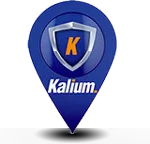Transport of Dangerous Goods (TDG) Online Training & Certification
|
Excellent training. I recommend it to all workers who work with the import and export of hazardous materials. |
Fast, personalized service at a more than reasonable price. |
Brigitte is extremely competent and experienced, takes care to find the right answers. Offers interesting and personalized training! |
Transport of dangerous goods Online Training Description
Safe Handling, Packaging and Storage of Dangerous Goods
Do you receive dangerous goods labelled in transport?
Do you handle these dangerous products? Do you have to send dangerous goods in transport? In all these situations, all employees must have a valid certification. We offer training for the transportation of dangerous goods by land (TDG), marine (IMDG) and air (IATA) as well as cross-border (CFR 49). All our training courses comply with Transport Canada requirements.
This training is suitable for any person handling, packaging and storing in accordance with the Transportation of Dangerous Goods (TDG) regulations.
We cover the following topics:
- Proper shipping names designation
- Safety Marks
- Documentation
- Classification (9 hazard classes)
- Appropriate standardized containers
- Emergency response assistance plans
- Exemptions
- Provincial regulations (tunnels and load securement)
- Marine transportation in Canadian waters
- Ferries
We privilege enjoyable learning with the help of games and didactic material. Each participant will receive a training booklet for future reference and a training certificate in accordance with Transport Canada standards.


Summary and objectives of the training
Did you know that the handling of dangerous goods requires your employer to certify your training in the Transportation of Dangerous Goods Regulations (TDGR)?
Did you know that in the event of an offence, a 5-year statute of limitations applies, and that each day is considered a separate offence during this period?
These obligations are too often ignored. Nevertheless, the TDGR is an integral part of operations for most companies in chemistry-related fields. In addition to WHMIS labelling and the Consumer Chemicals and Containers Regulations (CCCR), TDGR labelling is present in our workplaces. This presence, although fully acceptable, unilaterally requires staff to undergo training and recertification every 3 years in these regulations.
Training outline
Module 1: Regulatory Context
Module objectives: Be able to:
- Analyze the impact of non-compliance with the TDGR
- Assess whether RTDG training is mandatory in your workplace
- Distinguish risks not covered by the TDGR
- Understand the need for comprehensive classification.
1.1 History of TDGR in Canada
1.2 Legal responsibilities of each of the TDGR actors
1.2.1 The shipper and importer, the carrier and the handler
1.2.2 Offences and Penalties
1.3 TDGR Classification
1.3.1 What is Dangerous Goods (DG)?
1.3.2 Proof of classification
1.3.3 Definitions of classes 1 to 9
1.3.4 Lithium batteries (an introduction)
1.3.5 Identification of the need for an Emergency Response Assistance Plan (ERAP)
Module 2: Documentation
Module objectives: Be able to:
- Judge the compliance of a shipping document
- Analyze good practices for submitting a shipping document
- Apply the requirements of the standard to your own shipping documents
2.1 Regulatory Requirements
2.2 Proper presentation of the shipping description
2.3 Additional Information
Module 3: Safety Marks
Module objectives: Be able to:
- Judge the compliance of Safety Marks on a Truck Judge the compliance of Safety Marks on a Package
- Properly complete the marks and labelling of a package
- Evaluate acceptable equivalent indications requiring placards
- Explain to a carrier your reasoning leading to your choice of identifiers
3.1 Labels
3.2 Marking and labelling of a small container
3.3 Marking and labelling of a large means of containment
3.4 Regulatory use of placards in transport
3.5 Overpack
Module 4: Packaging loading and reporting
Module objectives: Be able to:
- Recognize standardized packaging.
- Understand packaging instructions.
- Choose the appropriate packaging
4.1 Characteristics of standardized packaging
4.2 Introduction to TP14850 and 14877
4.3 UN mark on packaging
4.4 Loading a trailer
4.5 Spills and Reporting
Module 5: Exemption and Training
Module objectives: Be able to:
- Justify the need to be trained in the TDGR to your employer
- Properly apply limited quantity exemptions
- Identify situations that can benefit from exemptions
- Synthesize regulations in real situations
5.1 Limited quantity exemption
5.2 Fuel exemption 1.33 and other exemptions
5.3 Passage through a tunnel
5.4 IMDG Training Overview (boat)
5.5 IATA Formation Flyover (aircraft)
5.6 Reciprocity CAN-USA
5.7 Exercises find errors
Frequently asked questions
Who is required to take TDG training?
As per Part 6 of the Transport of Dangerous Good Regulation (TDGR), "a person who handles, offers for transport or transports dangerous goods must be adequately trained and hold a training certificate.
According to statistics gathered by Transport Canada between 2009 and 2021, over 95% of reported incidents occurred on sites unknown to Transport Canada and therefore not inspected. These statistics demonstrate the importance of proper TDG training for anyone handling products identified for transport, to reduce and prevent incidents.
Furthermore, it is known that the WHMIS regulations provide an exemption for hazardous materials transported in compliance with federal or provincial TDG legislation. However, due to this exemption, employees may end up with only TDG labels in their hands. In this case, if employees are not trained in TDG, the risk assessment is not understood, hence the importance of proper employee training.
What topics are covered in the TDG online training course?
Our TDG training covers all parts of the TDGR and meets the criterion of appropriate training as written in section 6.2. Our training covers all the subjects mentioned in section 6.2: "the classification criteria and test methods in Part 2 (Classification); shipping names; the use of Schedules 1, 2 and 3; the shipping document and train consist requirements in Part 3 (Documentation); the dangerous goods safety marks requirements in Part 4 (Dangerous Goods Safety Marks); the certification safety marks requirements, safety requirements and safety standards in Part 5 (Means of Containment); the ERAP requirements in Part 7 (Emergency Response Assistance Plan); the report requirements in Part 8 (Reporting Requirements); safe handling and transportation practices for dangerous goods, including the characteristics of the dangerous goods; the proper use of any equipment used to handle or transport the dangerous goods; and the reasonable emergency measures the person must take to reduce or eliminate any danger to public safety that results or may reasonably be expected to result from an accidental release of the dangerous goods.
How long does the TDG online training take to complete?
TDG training is 4 hours long. It includes practical exercises for each of the modules covered, to ensure that learning is fully integrated. The training also concludes with a knowledge evaluation to ensure that all participants will be able to handle, request transportation or transport dangerous goods.
Is the TDG certificate recognized by Transport Canada?
Yes, as per section 6.3, an employer who has reasonable grounds to believe that an employee is adequately trained and will perform duties to which the training relates must issue a training certificate to the employee that includes the following information: the name and address of the place of business of the employer, the employee's name, the date the training certificate expires, preceded by the words 'Expires on' or 'Date d'expiration' and the aspects of handling, offering for transport or transporting dangerous goods for which the employee is trained, including the specific topics set out in section 6.2. Also, the training certificate must be signed by the employee and by the employer or another employee acting on behalf of the employer.
How long is the TDG certification valid?
As mentioned in Section 6.5 of the TDGR, a training certificate expires 36 months after its date of issuance for transport by road vehicle. It's important to note that the certificate is not transferable from one company to another, so if you change jobs, you'll have to take the training again with your new employer, even if the training is less than 3 years old, since the certificate must be signed by the employer.
What are the prerequisites for enrolling in the TDG online training?
There is no prerequisite to register for TDG training. Our online TDG training is suitable for all levels, from beginner to expert. The trainer will make sure everyone understands. For expert levels and complex situations, we can add exercises and training hours as needed.
Can I take the TDG training remotely or is it only available on-site?
Training is available either at your workplace or via videoconference. In both cases, a qualified instructor will give the course and be on hand to answer any questions.
What is the cost of the TDG online training course?
The cost of training is $875+tx for a group of 12 people.
How do I register for the TDG online training?
You can contact us through our "Contact an expert!" boxes on the various pages of our website, or by calling 450 906-6999.
Is there a final exam or assessment at the end of the TDG training?
Yes, there is an exam at the end of the course to assess what participants have learned. This also allows the instructor to take the time to re-explain any misunderstood notions.

Design, programming and hosting by VisionW3.com


